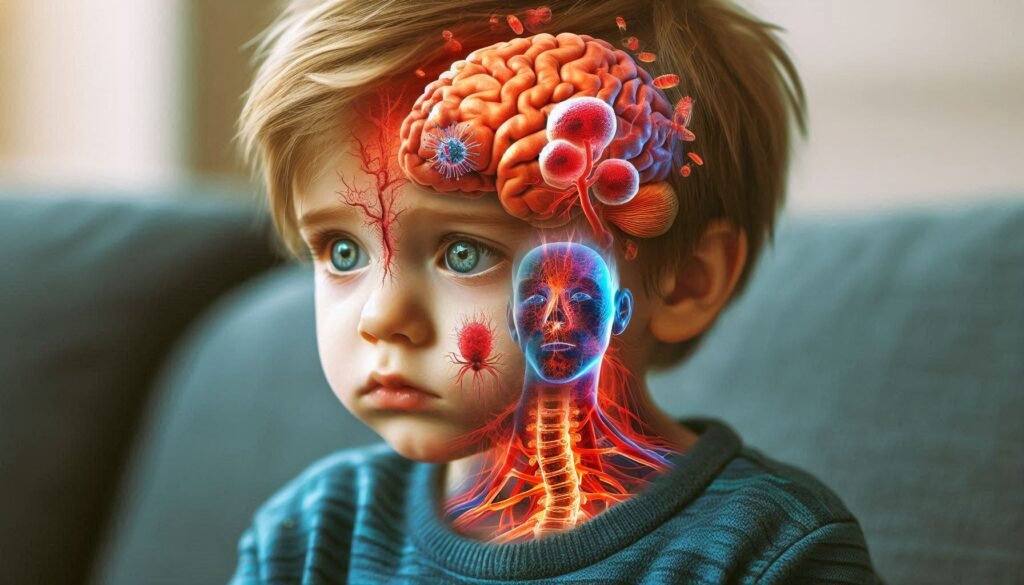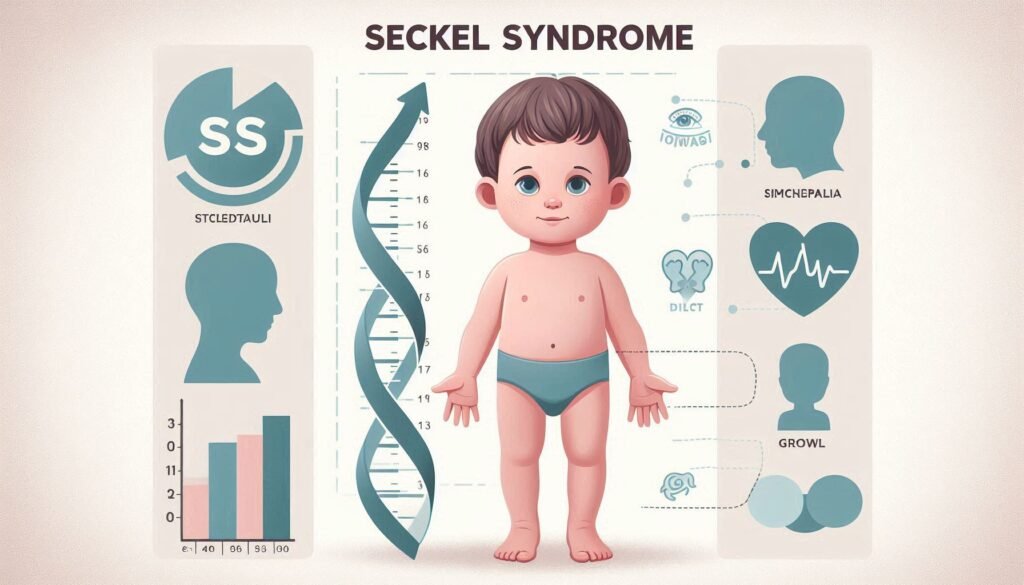Every parent’s worst nightmare is the sudden loss of a child. Sudden Infant Death Syndrome (SIDS) evokes fear in many, as it remains one of the leading causes of death among infants. Understanding this complex condition is crucial for parents and caregivers alike. With its heart-wrenching unpredictability, SIDS raises countless questions about what we can do to protect our little ones.
It’s vital to explore the causes and risk factors associated with SIDS, along with effective prevention strategies. By uncovering the layers surrounding this tragic phenomenon, we can empower families with knowledge that may save lives. Let’s delve into everything you need to know about Sudden Infant Death Syndrome: from its definition and prevalence to actionable steps for safeguarding your baby during sleep.

Understanding SIDS: Definition and Prevalence
Sudden Infant Death Syndrome (SIDS) is defined as the unexplained death of an otherwise healthy infant, typically occurring during sleep. This tragic event often strikes without warning, leaving families devastated and searching for answers.
Statistics reveal that SIDS accounts for approximately 1 in every 1,000 live births in developed countries. The peak incidence occurs between two and four months of age. While it can affect any baby, certain populations are more vulnerable.
“What Triggers Rasmussen Syndrome? Brain Disorder Guide”
Awareness of SIDS has grown significantly over the years, leading to ongoing research aimed at understanding its causes better. Education on safe sleeping practices aims to reduce prevalence rates further. Each year brings new insights into this complex issue, underscoring the importance of vigilance among caregivers and parents alike in fostering a safer sleep environment for infants.
The Pathophysiology of Sudden Infant Death Syndrome
Sudden Infant Death Syndrome (SIDS) remains a perplexing phenomenon in pediatric health. The exact mechanisms behind SIDS are still not fully understood, but several theories have emerged.
One prominent hypothesis involves the brain’s inability to regulate critical functions during sleep. Infants may experience disruptions in their breathing patterns or heart rate without adequate response from the autonomic nervous system. This lack of appropriate physiological reaction can lead to an increased risk of death.
“Why Does Reiter’s Syndrome Cause Joint Pain?”
Another aspect under investigation is the role of sleep position and environment. Babies placed on their stomachs or sides might face greater challenges with airway obstruction due to factors like soft bedding or co-sleeping arrangements.
Additionally, researchers examine neurochemical imbalances within specific regions of the brain that control arousal responses during sleep. These imbalances could hinder an infant’s ability to awaken when faced with potentially life-threatening situations, increasing vulnerability to SIDS.
Risk Factors Associated with SIDS: What Parents Need to Know
Understanding the risk factors associated with Sudden Infant Death Syndrome (SIDS) is crucial for every parent. Certain conditions can elevate the likelihood of SIDS, and being aware of these can help in safeguarding your baby.
One significant factor is sleep position. Babies who sleep on their stomachs or sides are at a higher risk compared to those placed on their backs.
Additionally, age plays a role; infants between one and four months old are particularly vulnerable.
“How Does Rett Syndrome Affect Child Development?”
Parental smoking is another critical concern. Exposure to tobacco smoke increases the risk significantly, both during pregnancy and after birth.
It’s also essential to consider co-sleeping situations where an adult may unintentionally roll over onto the infant or where bedding could pose suffocation hazards.
Premature birth or low birth weight raises susceptibility as well, making it imperative for parents to be especially vigilant if their baby had such challenges at birth.
Environmental Factors Contributing to SIDS Risk
Environmental factors play a significant role in the risk of Sudden Infant Death Syndrome (SIDS). The sleep environment can greatly influence an infant’s safety and well-being.
Soft bedding, such as pillows or blankets, increases the likelihood of suffocation. To minimize this risk, parents should opt for firm mattresses with fitted sheets only.
Room temperature is another critical factor. Infants can easily overheat if they are dressed too warmly or if their sleeping area is excessively heated. Maintaining a comfortable room temperature helps create a safer sleep setting.
“What Causes Reye’s Syndrome? Prevention Guide”
Co-sleeping poses additional risks when combined with soft surfaces or parental exhaustion. Ensuring infants have their own safe sleep space is essential for reducing SIDS occurrences.
Exposure to environmental smoke remains a concerning risk factor. Avoiding smoking around infants significantly decreases SIDS probabilities and promotes healthier air quality for babies.
Genetic Predisposition and SIDS: Current Research Insights
Emerging research indicates that genetic factors may play a significant role in Sudden Infant Death Syndrome (SIDS). While the exact genes involved remain under investigation, several studies suggest that certain inherited traits can increase susceptibility.
Genetic predisposition might affect how an infant’s body responds to various stressors during sleep. For instance, abnormalities in brain structures responsible for regulating breathing and arousal could contribute to SIDS risk.
“Why Does Raynaud’s Syndrome Affect Blood Flow?”
Recent findings have identified specific gene variants linked to respiratory control and cardiac function. These insights highlight the importance of understanding individual differences among infants regarding their vulnerability.
Further research is essential to unravel these complex interactions between genetics and environmental triggers. By identifying at-risk infants through genetic screening, targeted prevention strategies may be developed in the future, offering hope for reducing SIDS occurrences significantly.
Safe Sleep Practices: The Cornerstone of SIDS Prevention
Creating a safe sleep environment is essential for reducing the risk of Sudden Infant Death Syndrome (SIDS). The American Academy of Pediatrics recommends placing infants on their backs to sleep, which significantly lowers the chances of SIDS.
Using a firm mattress without soft bedding is crucial. Avoid pillows, blankets, and stuffed toys in the crib, as these can pose suffocation risks. Swaddling can be beneficial but should be done correctly to prevent overheating.
“How Does Renal Fanconi Syndrome Impact Kidneys?”
Room-sharing rather than bed-sharing offers additional protection. Infants should sleep in the same room as their parents for at least six months but have their own separate sleeping space.
Maintaining a comfortable temperature helps too. Ensure your baby’s sleeping area is not too hot or cold by dressing them appropriately and monitoring room conditions regularly. These practices lay a strong foundation for safer sleep experiences while minimizing potential hazards associated with SIDS.
The Role of Breastfeeding in Reducing SIDS Risk
Breastfeeding plays a significant role in reducing the risk of Sudden Infant Death Syndrome (SIDS). Research indicates that infants who are breastfed have a lower chance of experiencing SIDS compared to those who are formula-fed.
The protective benefits of breastfeeding may stem from several factors. Breast milk contains essential nutrients and antibodies that boost an infant’s immune system, promoting overall health. This can lead to fewer respiratory infections and illnesses, which are linked to higher SIDS rates.
“What Are The Signs of Riley-Day Syndrome?”
Moreover, breastfeeding encourages skin-to-skin contact between mother and baby. This interaction fosters bonding and helps regulate the baby’s sleep patterns. A well-regulated sleep environment is crucial for minimizing SIDS risks.
Additionally, breastfeeding typically supports safer sleeping practices. Mothers who breastfeed often tend to follow guidelines that promote safe sleep environments for their babies, further decreasing potential dangers associated with improper sleeping positions or surfaces.
Pacifier Use and Its Impact on SIDS Prevention
Pacifier use has been linked to a lower risk of Sudden Infant Death Syndrome (SIDS). Studies suggest that offering a pacifier during sleep may help keep infants safe. The exact reason for this protective effect remains unclear.
One theory is that sucking on a pacifier encourages an infant’s airway to remain open. This can prevent obstructive sleep apnea, which might contribute to SIDS risks. Additionally, using a pacifier may promote lighter sleep states, allowing babies to awaken more easily if they experience breathing difficulties.
It’s important to introduce the pacifier after breastfeeding is well-established—usually around 3-4 weeks old. Parents should also avoid forcing their baby to take one if they resist.
While not all infants will accept a pacifier, those who do could potentially benefit from its calming effects and possible SIDS prevention properties.
Temperature Regulation and SIDS: Maintaining a Safe Sleep Environment
Temperature regulation plays a crucial role in creating a safe sleep environment for infants. Babies are particularly vulnerable to overheating, which has been linked to an increased risk of Sudden Infant Death Syndrome (SIDS).
To maintain a comfortable sleeping temperature, experts recommend keeping the room between 68°F and 72°F. Use lightweight clothing and avoid heavy blankets that can trap heat. A fitted sheet on the crib mattress is ideal; it reduces the risk of suffocation while ensuring breathability.
Monitoring your baby’s body temperature can also provide important clues. If they feel sweaty or their cheeks appear flushed, it’s time to adjust their surroundings.
Parents should prioritize airflow in the nursery by using fans or opening windows when appropriate. This simple measure can significantly enhance safety during those critical early months of life.
Smoking and SIDS: The Critical Link
Smoking during pregnancy is a significant risk factor for Sudden Infant Death Syndrome (SIDS). Expecting mothers who smoke expose their unborn child to harmful chemicals that can impair brain development. This damage may affect the baby’s ability to regulate breathing and arousal from sleep.
Postnatal exposure to secondhand smoke also poses dangers. Infants exposed to cigarette smoke are more likely to experience respiratory issues, which can increase SIDS risk. Smoke particles linger in the environment, making it crucial for families to maintain a smoke-free home.
Research indicates that infants placed in smoky environments face an elevated likelihood of SIDS compared to those raised in clean air. Both maternal smoking and environmental tobacco exposure contribute significantly, highlighting the need for awareness on this critical link between smoking and SIDS outcomes.
The Triple Risk Model: A Framework for Understanding SIDS
The Triple Risk Model offers a comprehensive framework for understanding Sudden Infant Death Syndrome (SIDS). It combines three critical factors that contribute to the risk of SIDS occurring in infants.
There is the presence of an infant who is vulnerable. This vulnerability can stem from physiological issues or developmental delays that affect how they respond during sleep.
Environmental stressors play a significant role. These include external influences such as sleeping position and surface, which can increase the likelihood of SIDS when combined with infant susceptibility.
There’s the timing element. Most cases occur between two and four months of age when infants are most susceptible yet not fully developed in their ability to regulate breathing and arousal responses during sleep disturbances. Understanding this model aids parents and caregivers in recognizing risks while implementing effective prevention strategies.
SIDS vs. SUID: Distinguishing Between Related Conditions
Sudden Infant Death Syndrome (SIDS) and Sudden Unexplained Infant Death (SUID) often cause confusion, but they represent distinct concepts. SIDS specifically refers to the sudden death of an infant under one year old that remains unexplained even after thorough investigation.
On the other hand, SUID is a broader category encompassing any unexpected infant death for which the cause isn’t immediately clear. This includes cases classified as SIDS but also encompasses those deaths linked to identifiable causes like accidental suffocation or underlying medical conditions.
Understanding this distinction is crucial for parents and caregivers. It helps them recognize that while all SIDS falls under SUID, not all SUID cases are due to SIDS. Awareness can lead to more informed discussions with healthcare providers about risks and preventive measures associated with each condition.
Age-Related Risk Patterns in SIDS Cases
Age plays a crucial role in the incidence of Sudden Infant Death Syndrome (SIDS). Most cases occur between two and four months of age. Infants in this window are particularly vulnerable due to their developing neurological systems.
Research indicates that SIDS risk diminishes significantly after six months, as infants gain better control over their breathing and sleep patterns. By one year, the likelihood drops even further.
Parents should remain vigilant during these early months. Observing developmental milestones can be helpful for understanding risks associated with age. Each stage brings its own challenges but also opportunities for proactive measures.
Understanding these age-related patterns assists caregivers in making informed decisions about safe sleep practices tailored to specific developmental stages. Awareness can foster vigilance, ultimately enhancing safety for infants within this sensitive timeframe.
The Impact of Prenatal Care on SIDS Prevention
Prenatal care plays a critical role in reducing the risk of Sudden Infant Death Syndrome (SIDS). Expectant mothers who receive regular check-ups can identify and address potential health issues early on. This proactive approach not only promotes maternal well-being but also supports fetal development.
During prenatal visits, healthcare providers discuss essential topics like safe sleep practices, smoking cessation, and nutrition. Educating parents about these aspects helps create a safer environment for infants once they arrive.
Additionally, proper prenatal care can ensure that vaccinations are up to date. Immunizations have been linked to lower SIDS rates. When babies receive their shots on schedule, they are better protected against infections that may contribute to SIDS risk factors.
Addressing mental health during pregnancy is equally important. Maternal stress or depression can affect infant outcomes; thus, support systems must be in place to foster emotional well-being throughout gestation.
Cardiorespiratory Monitors: Their Role in SIDS Prevention
Cardiorespiratory monitors are designed to track an infant’s heart rate and breathing patterns during sleep. These devices can provide peace of mind for parents, especially those with infants at higher risk for Sudden Infant Death Syndrome (SIDS).
By alerting caregivers to irregularities in vital signs, these monitors can prompt timely intervention. This technology serves as an extra layer of protection while babies rest.
However, it’s essential to understand that cardiorespiratory monitors do not eliminate the risk of SIDS entirely. They should be used alongside established safe sleep practices rather than as a sole preventive measure.
Parents should also consult healthcare providers about the appropriate use of such monitoring devices. Tailoring their approach based on individual circumstances is crucial for maximizing safety during vulnerable sleeping periods.
Immunizations and SIDS: Debunking Common Myths
Immunizations are a crucial aspect of child health, but misconceptions about their relationship with Sudden Infant Death Syndrome (SIDS) persist. One prevalent myth suggests that vaccines might increase the risk of SIDS. However, research consistently shows no causal link between vaccinations and SIDS.
Studies indicate that vaccinated infants actually have a lower risk for various serious illnesses. This protection may indirectly contribute to reducing SIDS incidents by preventing infections that could compromise an infant’s health.
Moreover, public health experts emphasize the importance of immunization as part of comprehensive pediatric care. Ensuring children receive all recommended vaccines not only safeguards against illness but also supports overall development.
Parents should feel confident in discussing any concerns with healthcare providers. Open communication is key to dispelling myths and ensuring children’s well-being during these formative years.
Racial and Ethnic Disparities in SIDS Incidence
Racial and ethnic disparities in Sudden Infant Death Syndrome (SIDS) incidence reveal significant insights into this complex issue. Research indicates that African American infants face a higher risk of SIDS compared to their white counterparts. This alarming statistic highlights the need for targeted interventions.
Several factors contribute to these disparities. Socioeconomic status, access to healthcare, and cultural practices can all play pivotal roles in shaping an infant’s environment. Additionally, maternal health conditions often differ among racial groups, influencing SIDS risks.
Understanding these differences is crucial for public health strategies aimed at reducing overall SIDS rates. Tailored educational programs addressing specific communities can help mitigate risks by promoting safe sleep practices and increasing awareness about SIDS prevention methods. The fight against SIDS must acknowledge these nuances to ensure every family receives the support they need.
SIDS Support: Resources for Bereaved Families
The loss of a child to Sudden Infant Death Syndrome (SIDS) is an unimaginable tragedy. Bereaved families often feel isolated in their grief, but support is available.
Organizations like The National SUID Resource Center and First Candle provide essential resources. They offer helplines, counseling services, and online forums where parents can connect with others who understand their pain.
Local support groups also play a vital role. Many hospitals and community centers host meetings where grieving parents can share experiences and find comfort in companionship.
Additionally, books and literature focusing on coping strategies can help families process their emotions. Reading about others’ journeys through similar losses fosters understanding and healing.
Some mental health professionals specialize in grief counseling for parents affected by SIDS. Connecting with these experts ensures that families receive compassionate care tailored to their unique experiences during such a difficult time.
The Future of SIDS Research: Promising Directions
The field of Sudden Infant Death Syndrome (SIDS) research is evolving rapidly, with new studies shedding light on various aspects of this complex issue. Researchers are increasingly focused on understanding the biological mechanisms that contribute to SIDS, particularly in infants who may have underlying vulnerabilities. Genetic studies are helping identify specific markers associated with increased risk.
Advancements in technology also play a crucial role. Innovations like wearable monitors and smart sleep devices aim to provide parents with real-time data about their baby’s breathing patterns and heart rates, potentially alerting them to any anomalies before they become critical.
Public health initiatives continue to emphasize education around safe sleep practices as well. By enhancing awareness within communities, healthcare providers hope to reduce SIDS occurrences through preventative measures rooted in scientific evidence.
Collaboration among researchers worldwide promotes sharing insights and findings that can lead to more effective prevention strategies. As we delve deeper into the causes and risk factors surrounding SIDS, targeted interventions will likely emerge, giving families greater peace of mind during those vulnerable early months.
Every step taken towards understanding SIDS not only helps inform prevention but also supports grieving families who navigate the complexities surrounding this heartbreaking phenomenon. The future holds promise for advancements that could reduce incidences of Sudden Infant Death Syndrome significantly while providing necessary support for affected families along the way.


